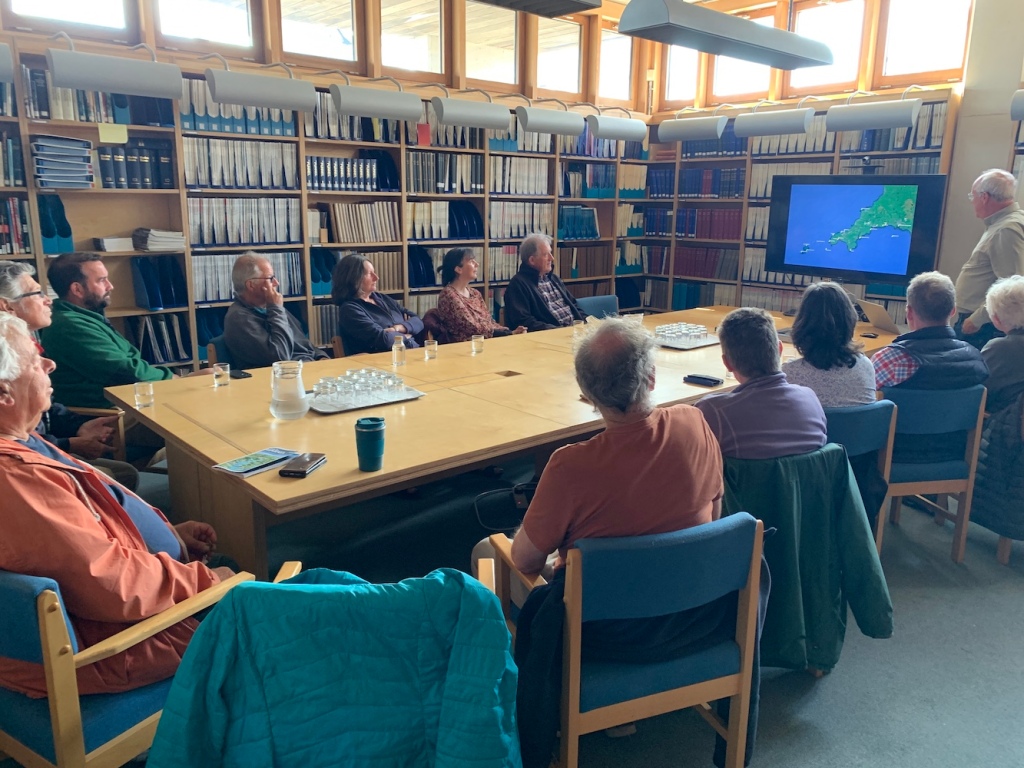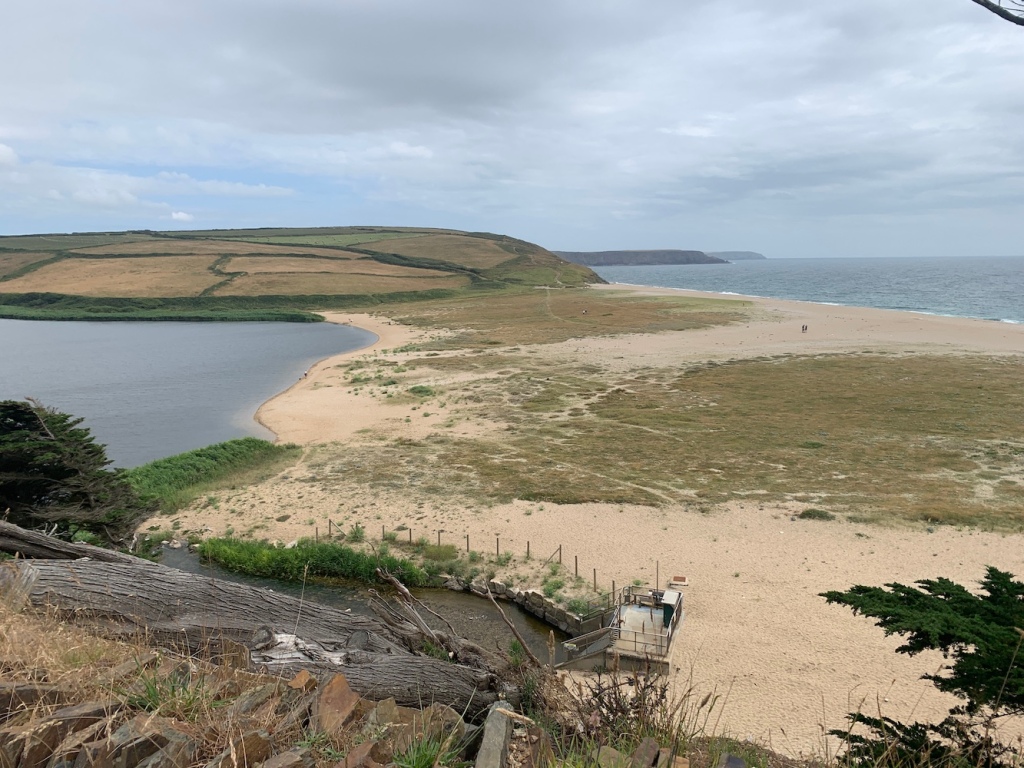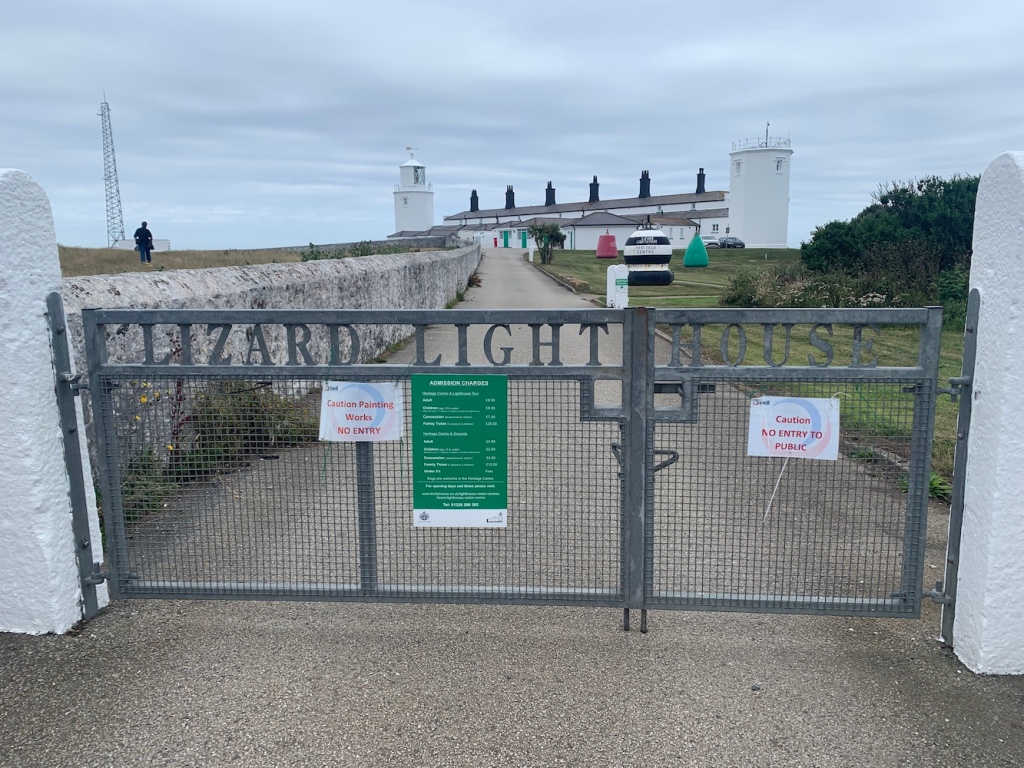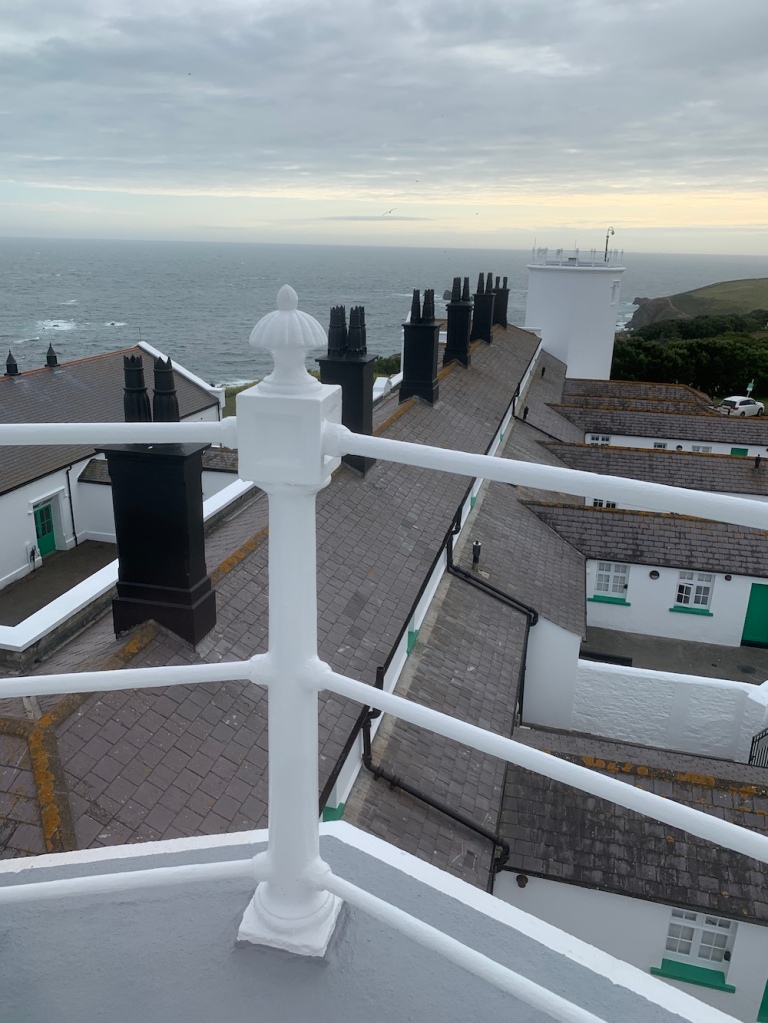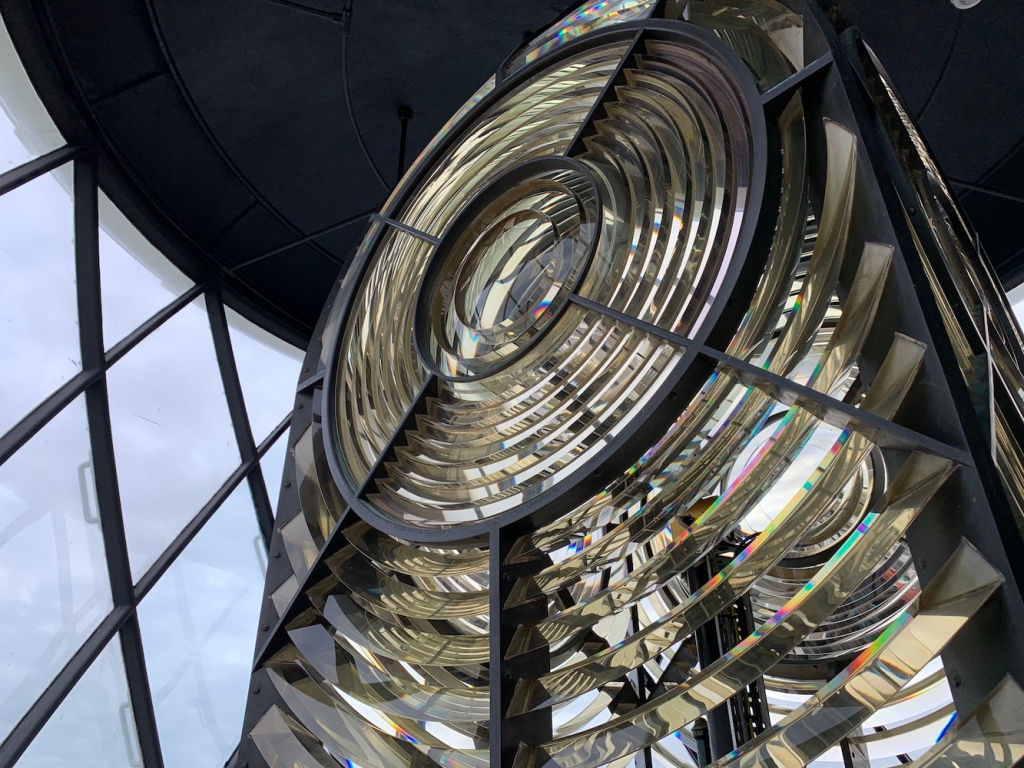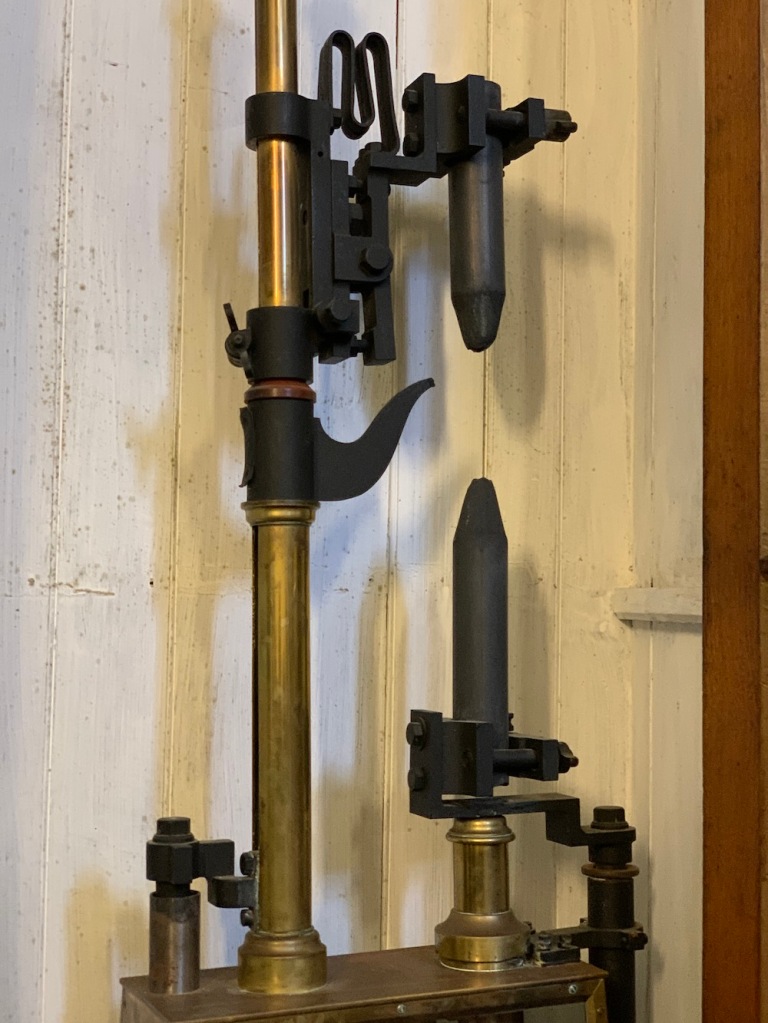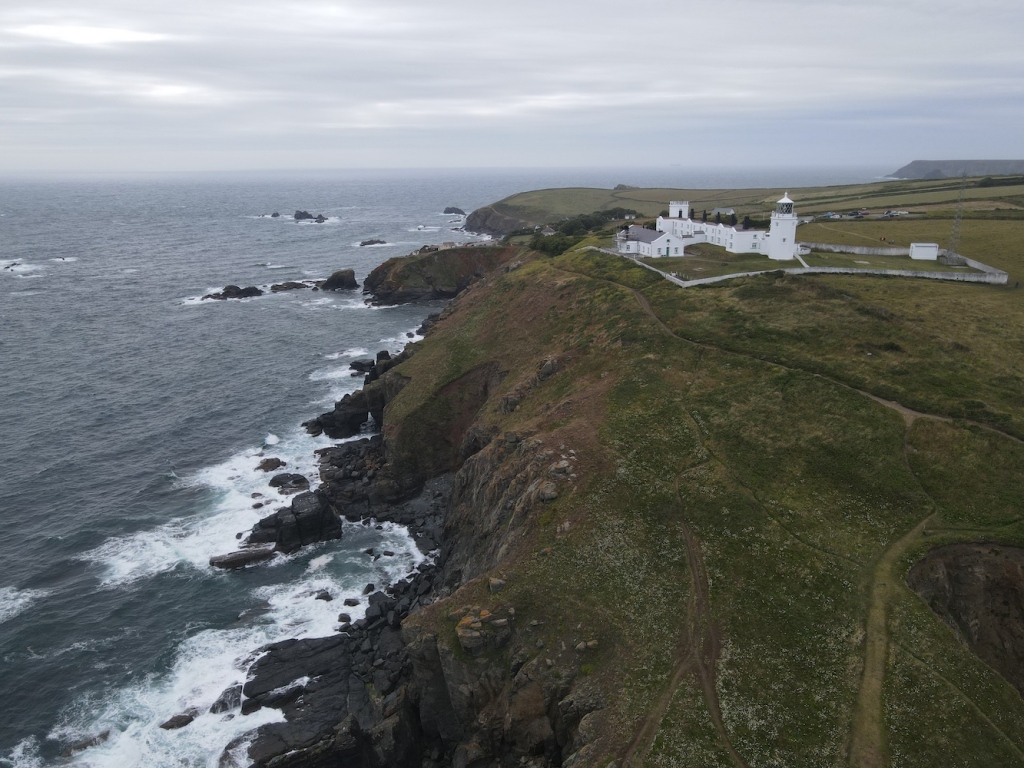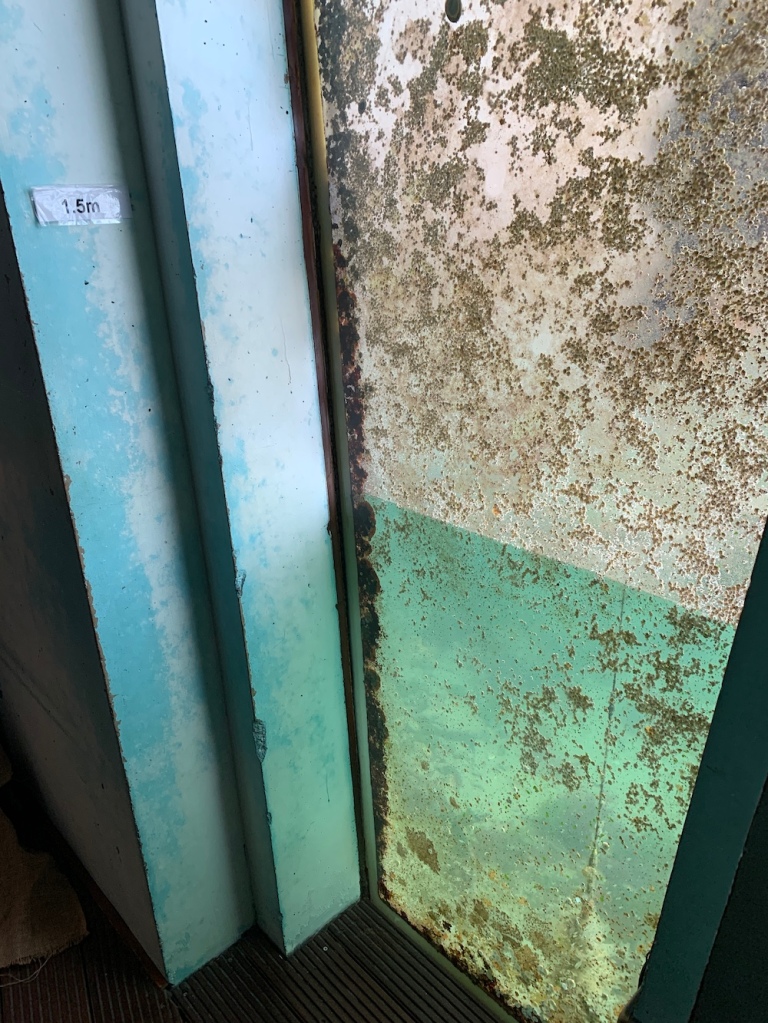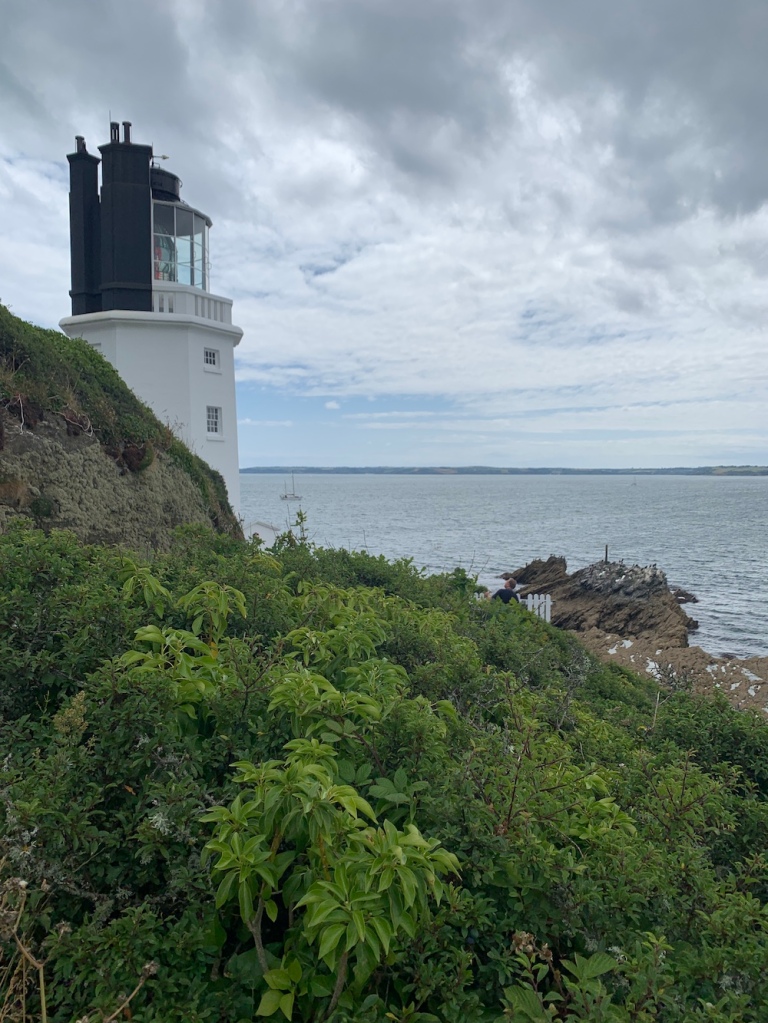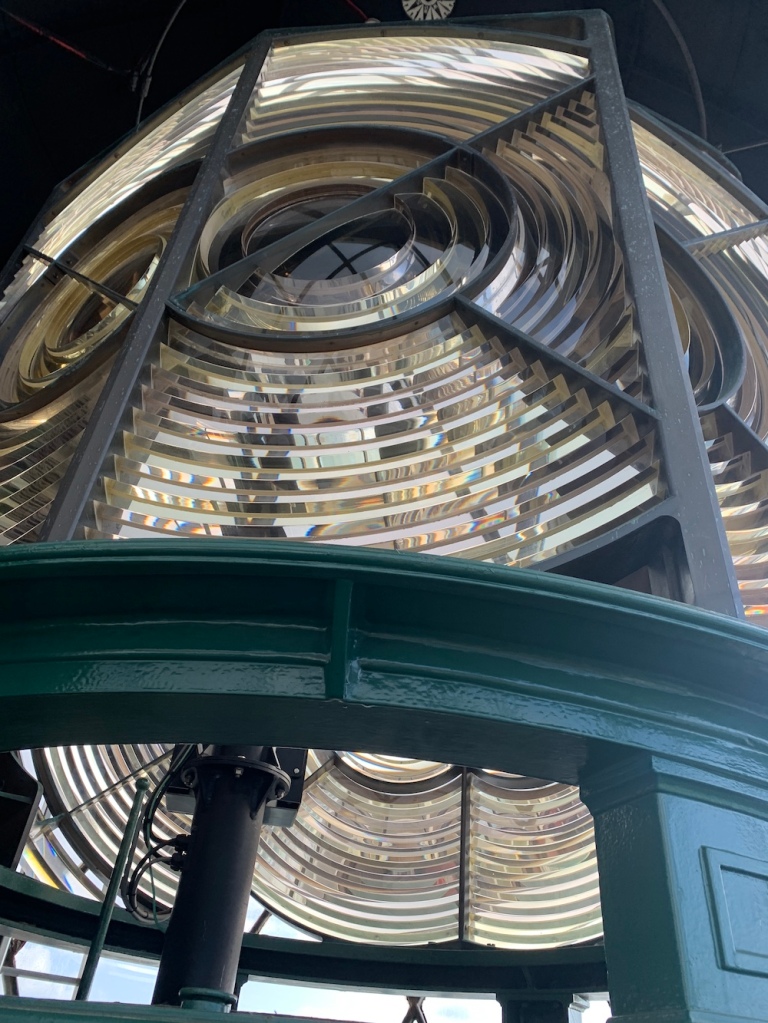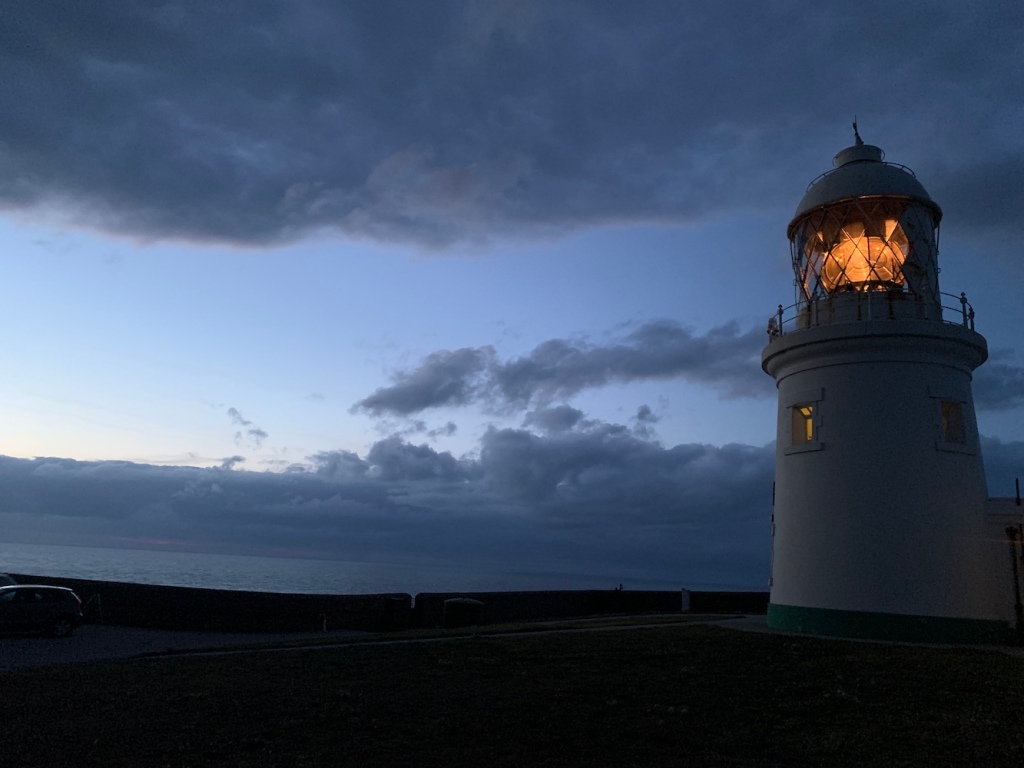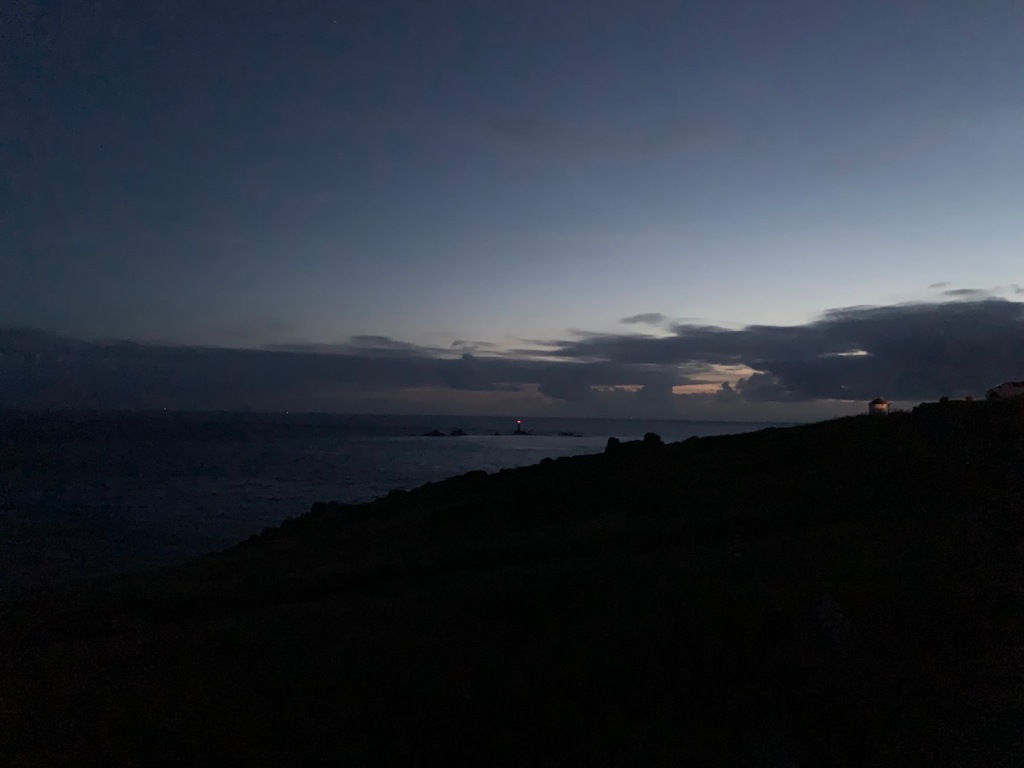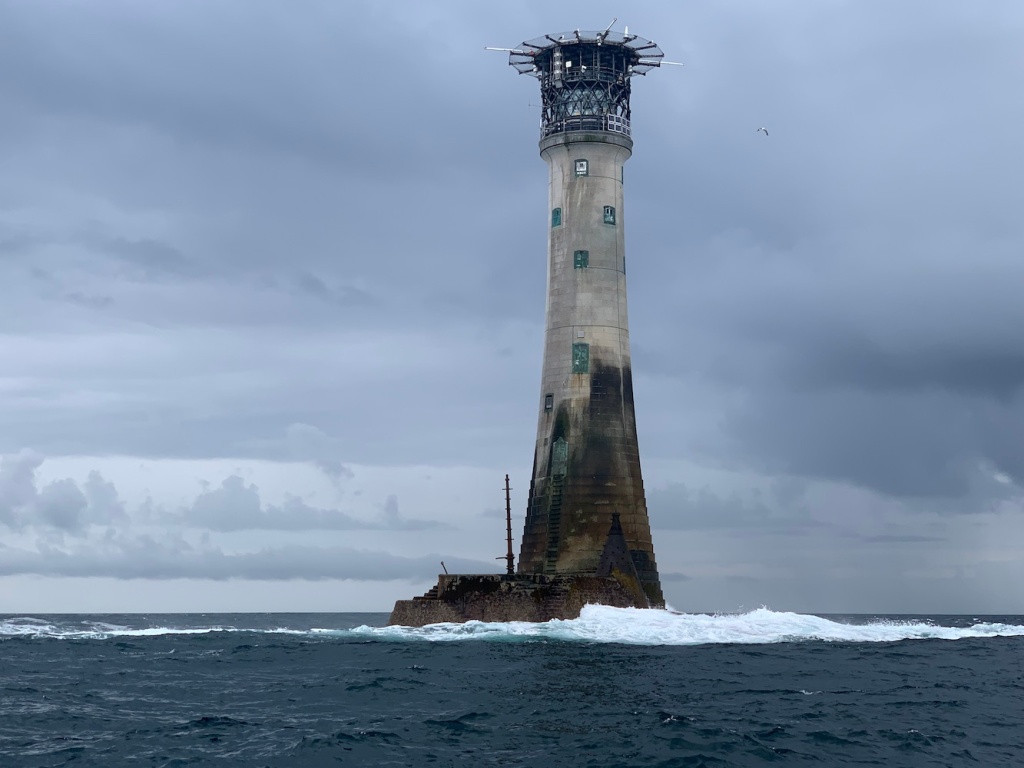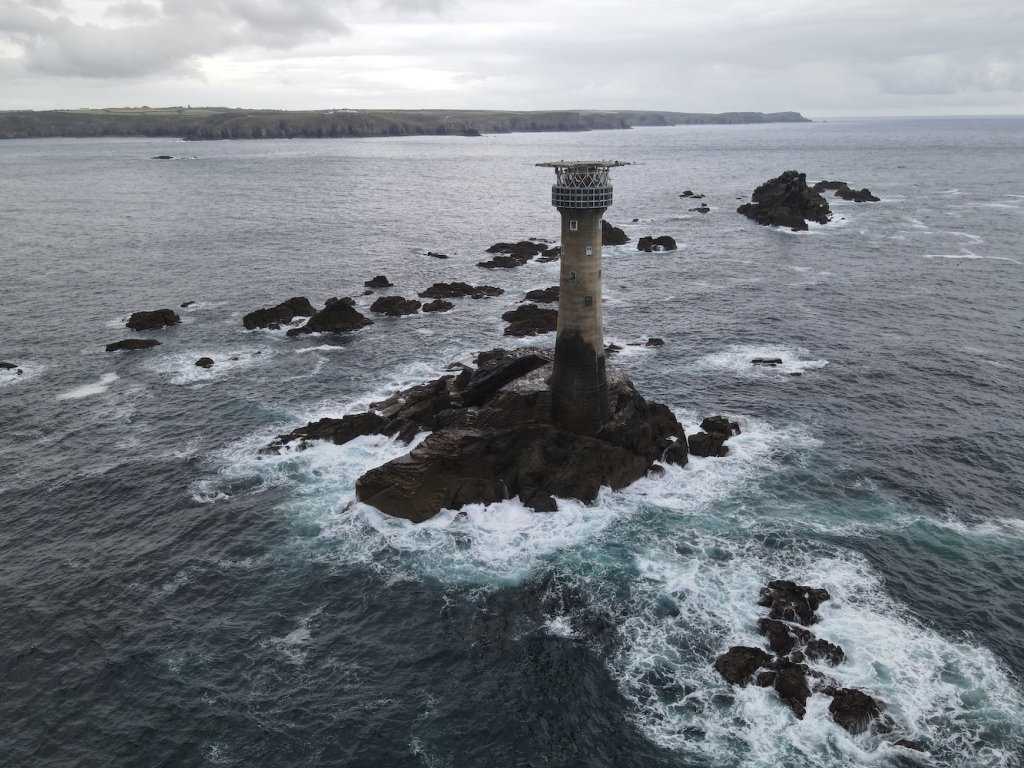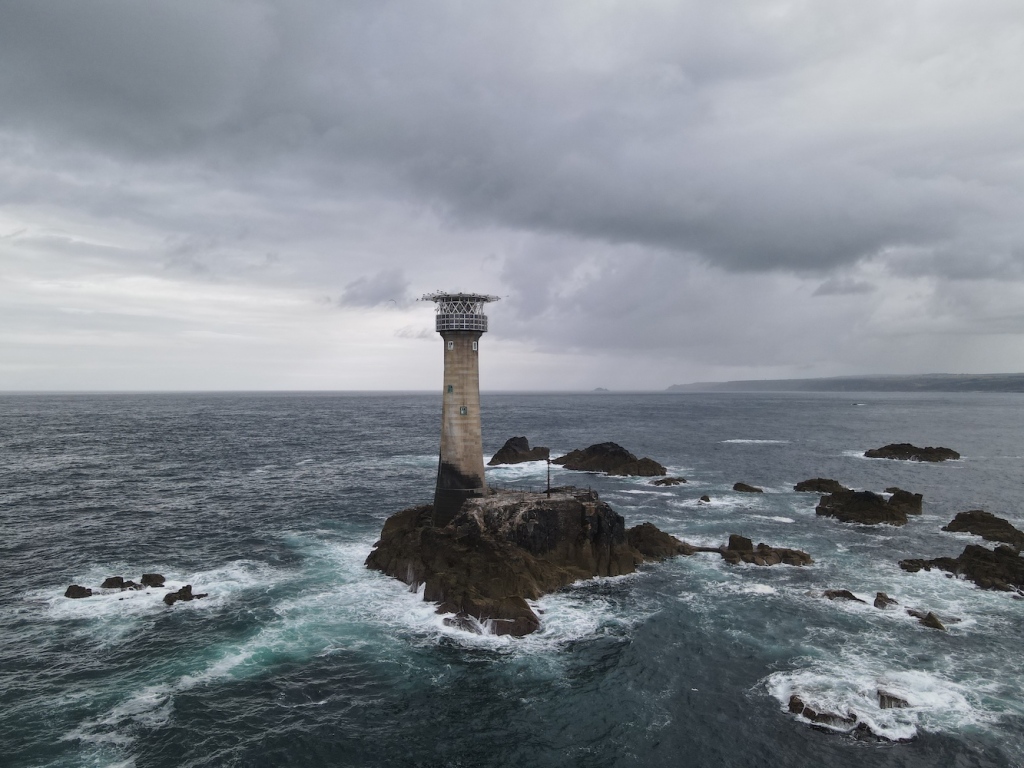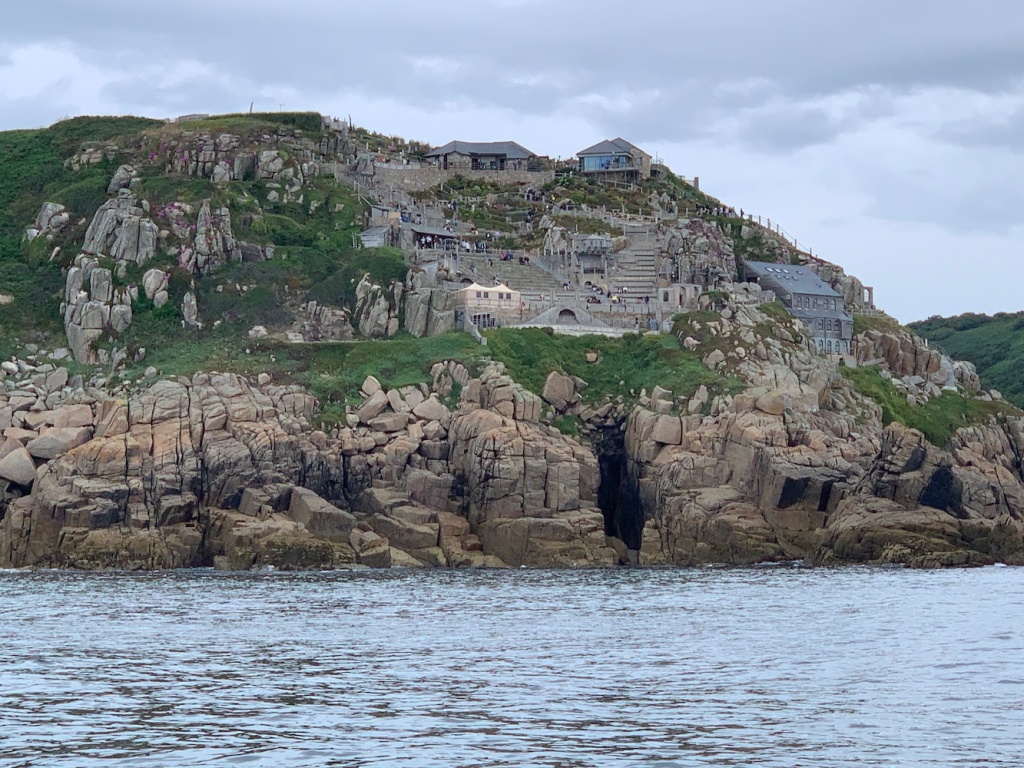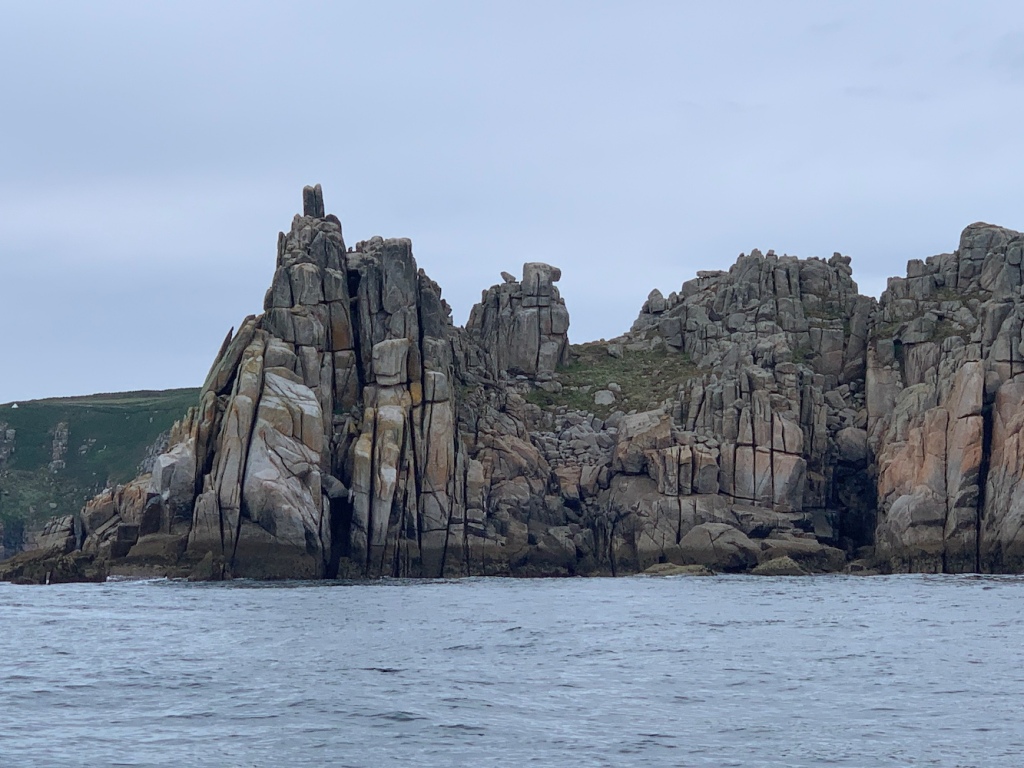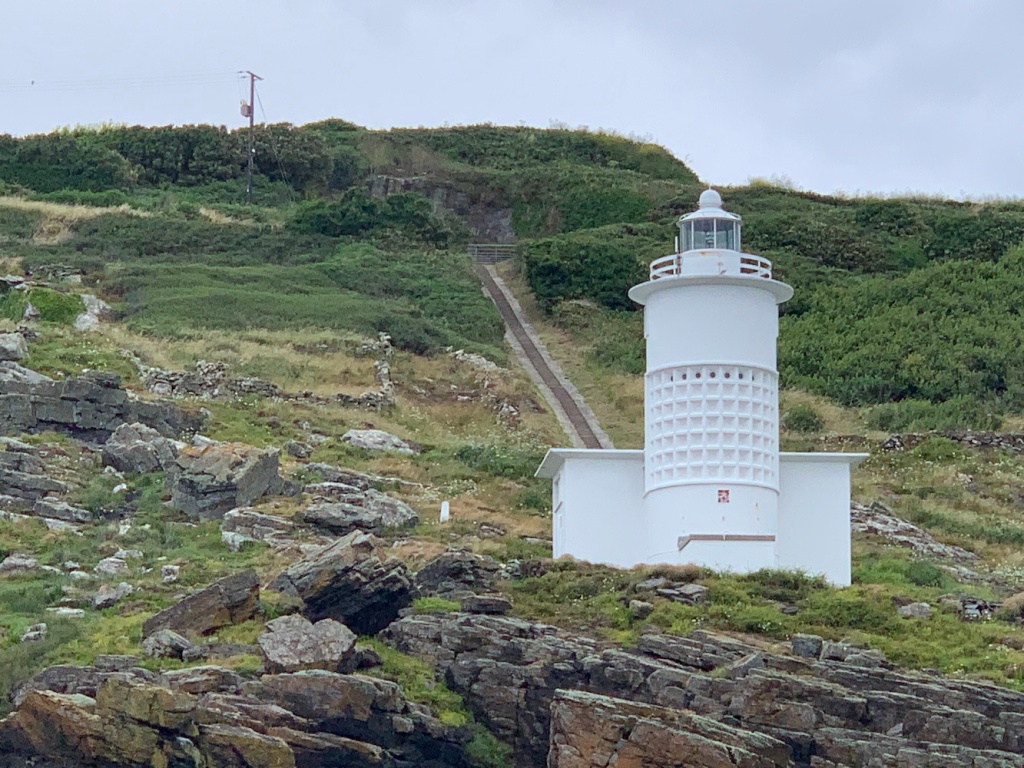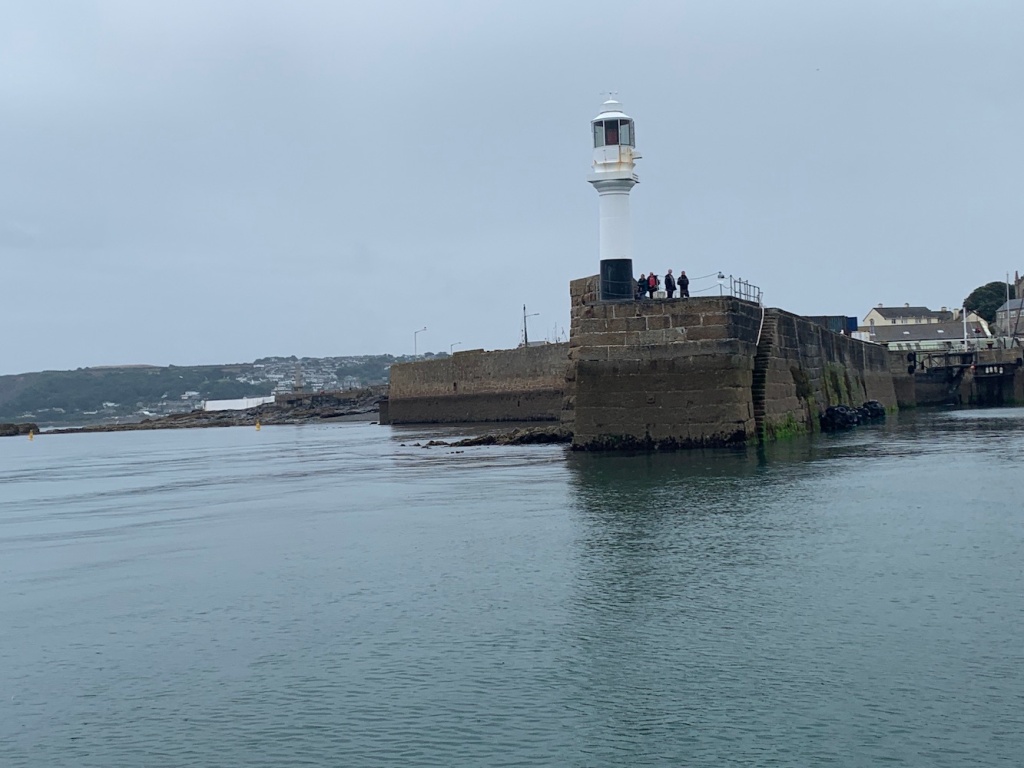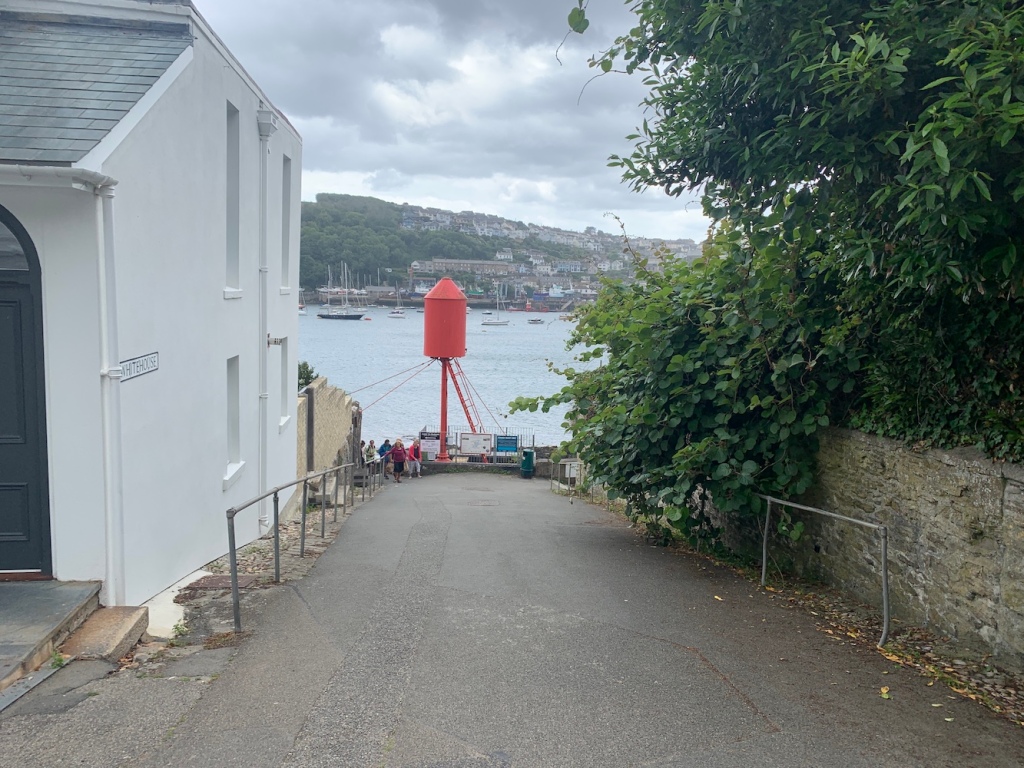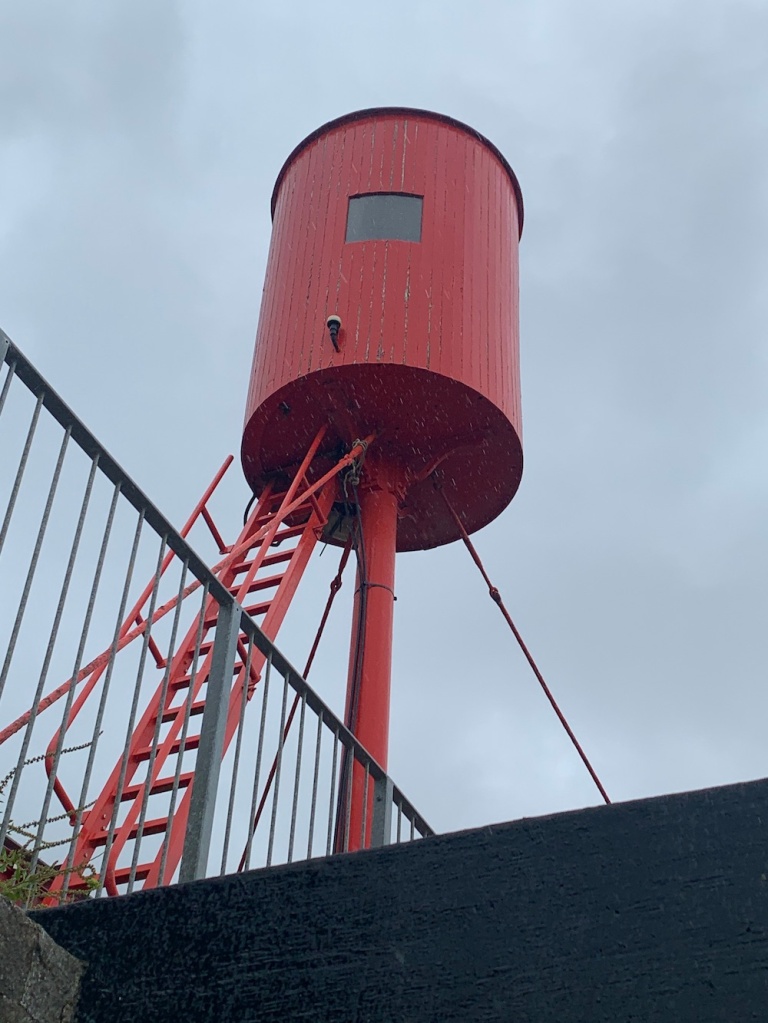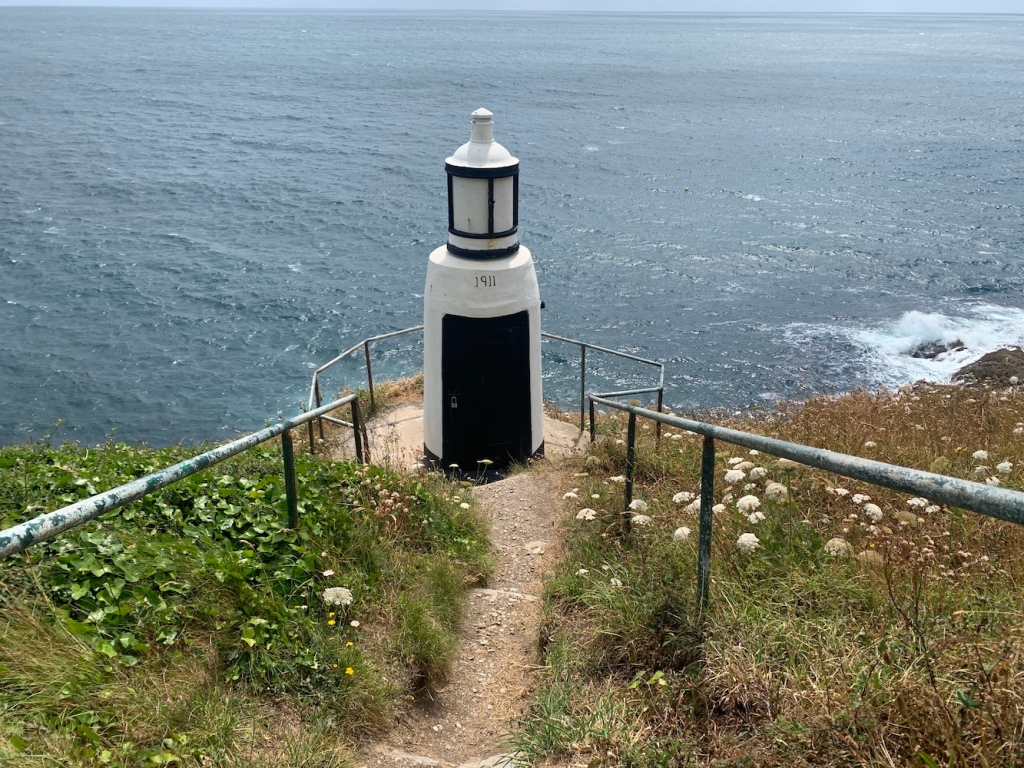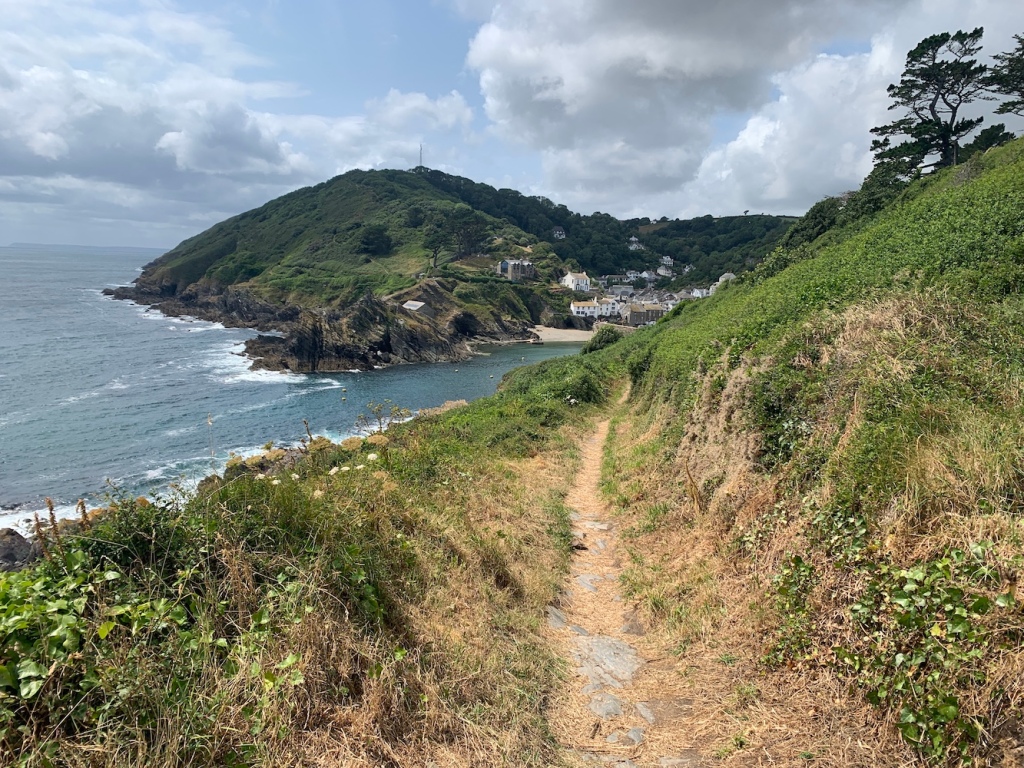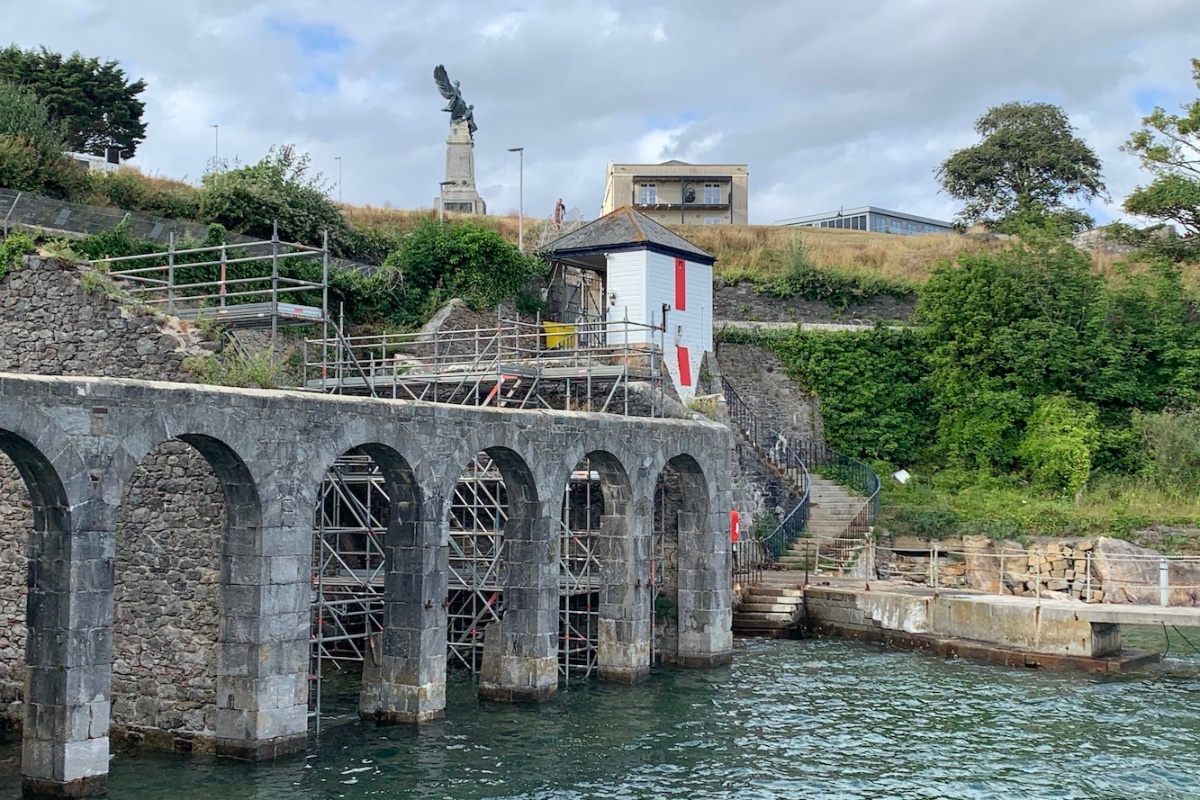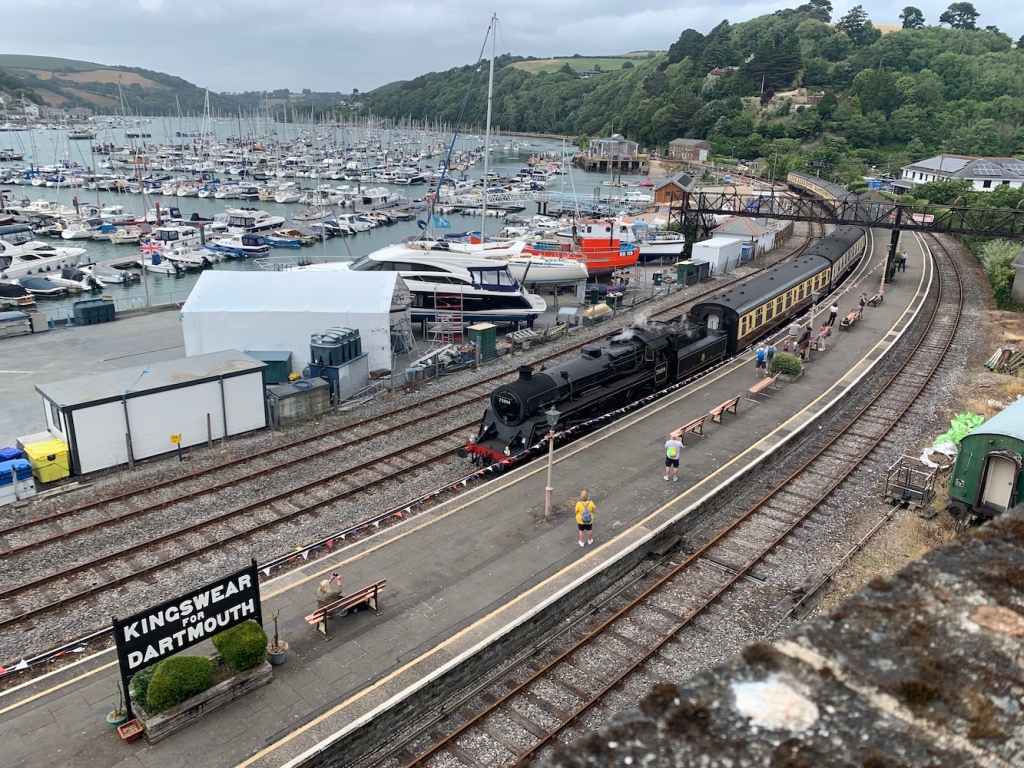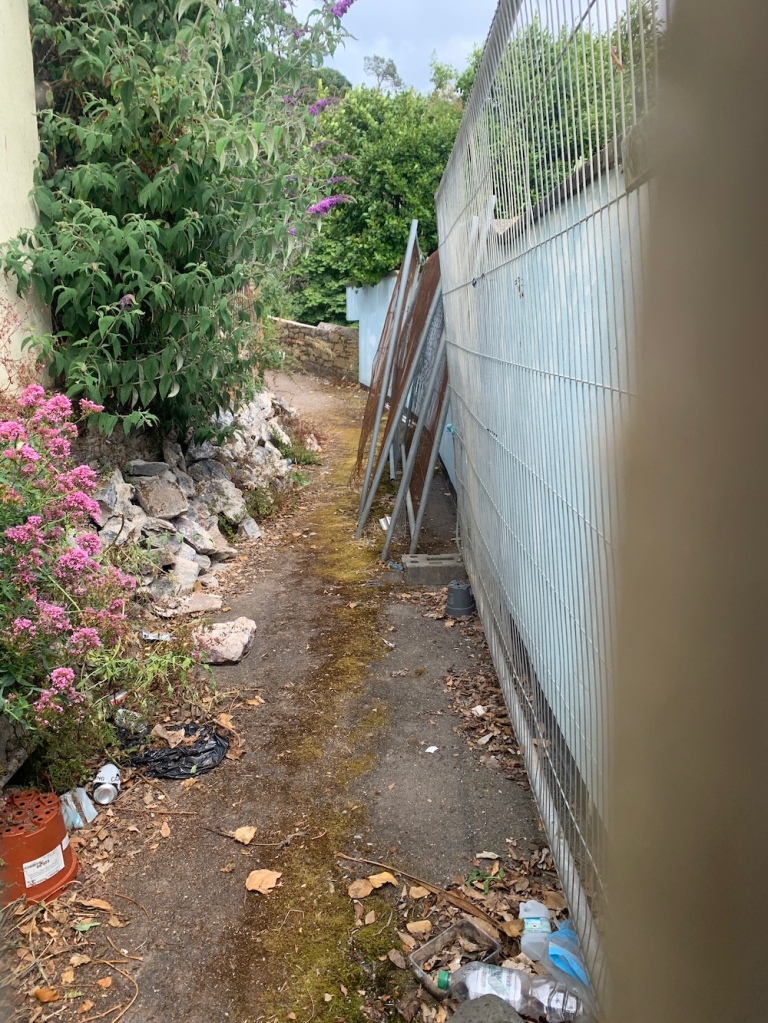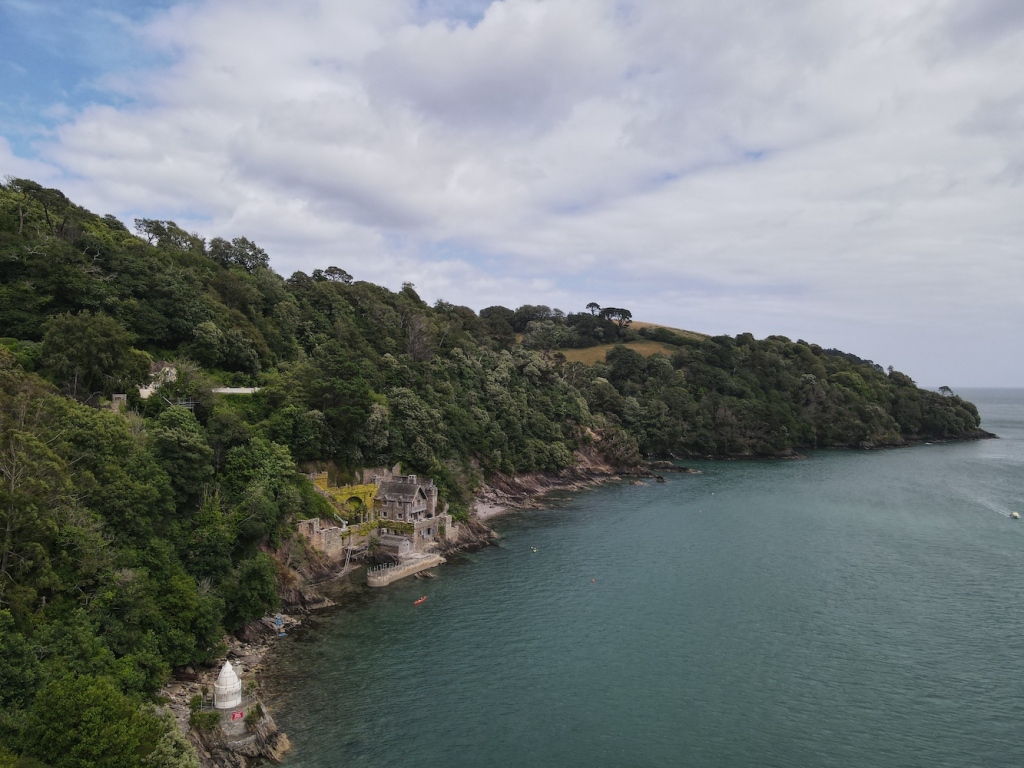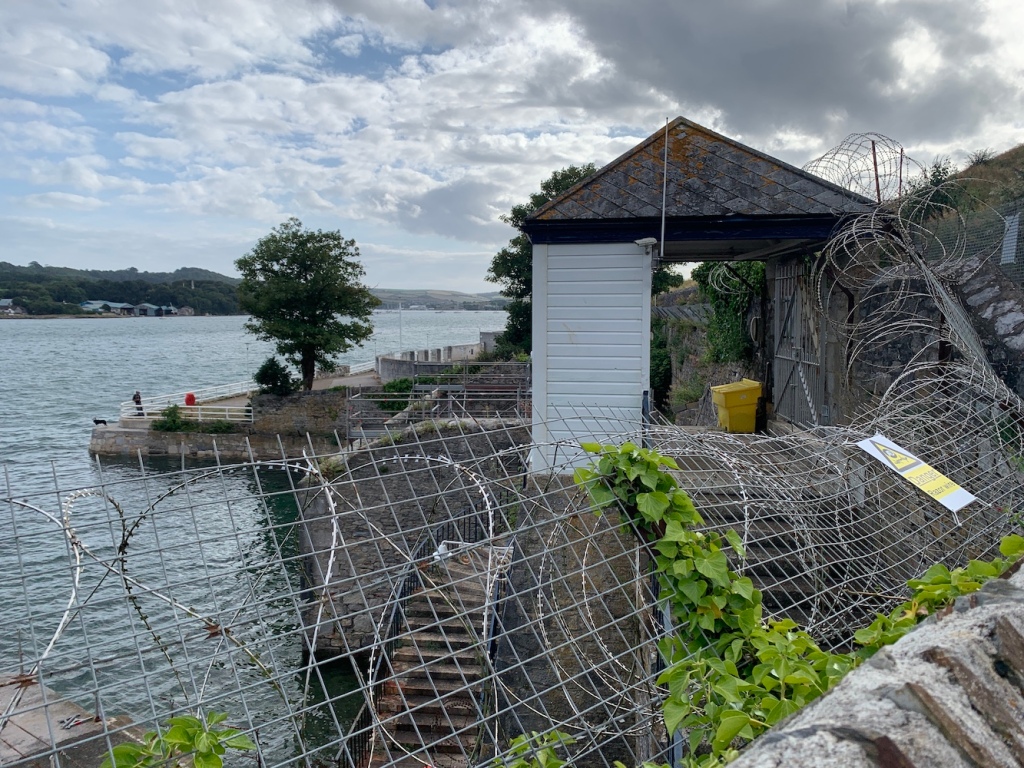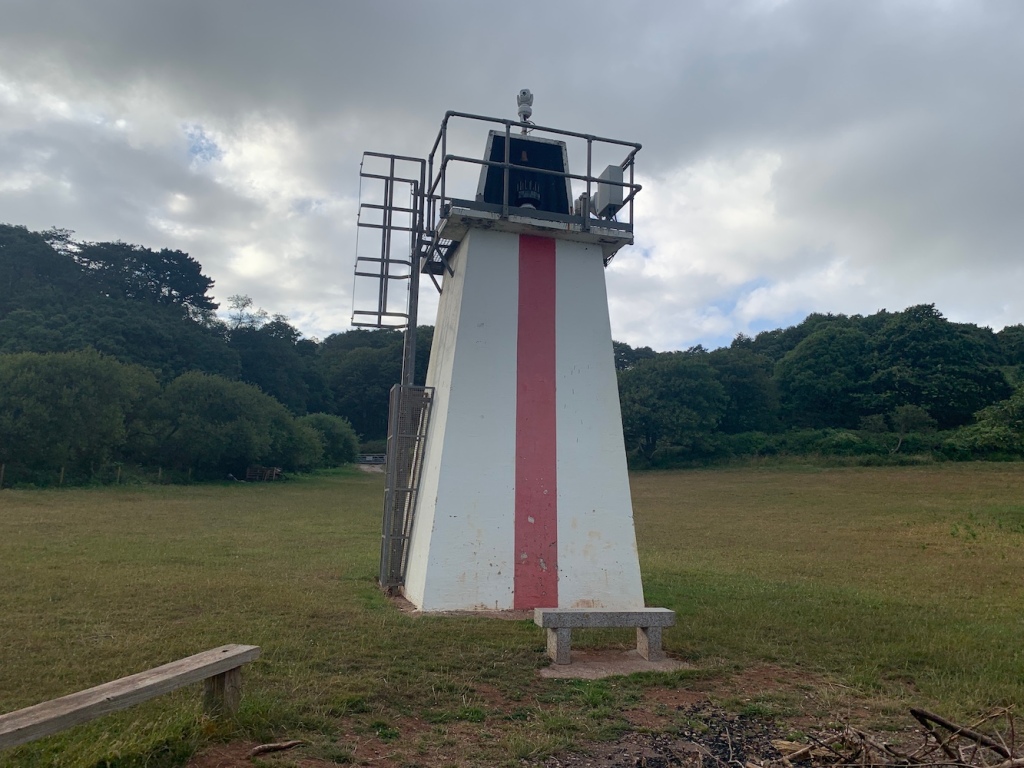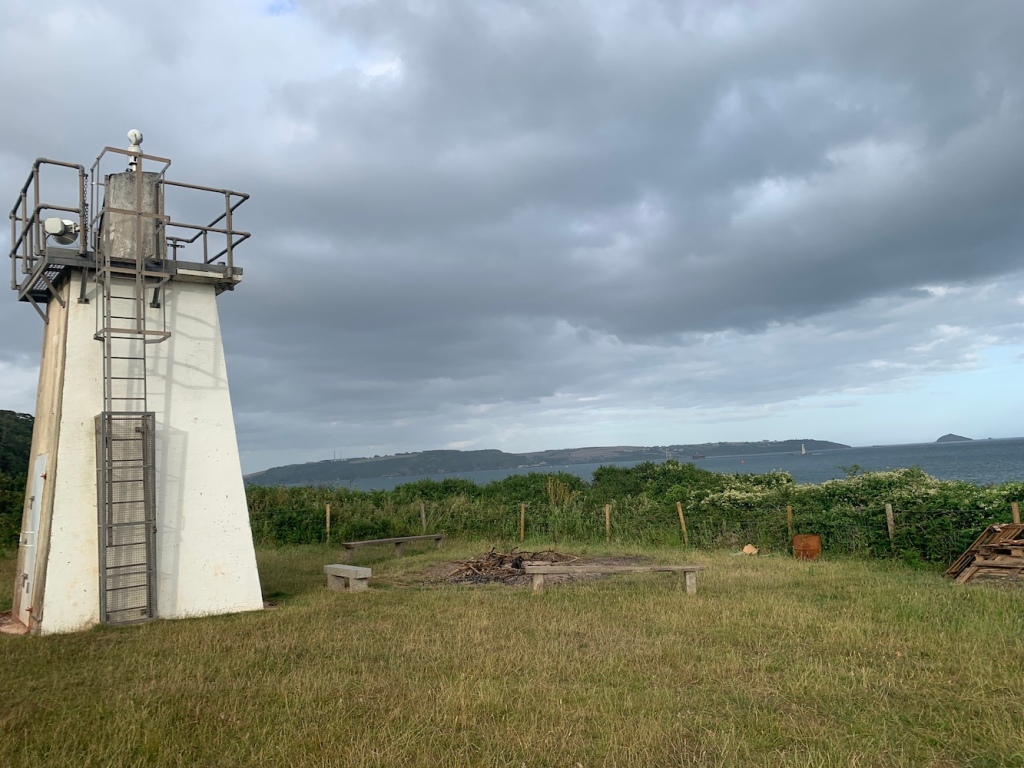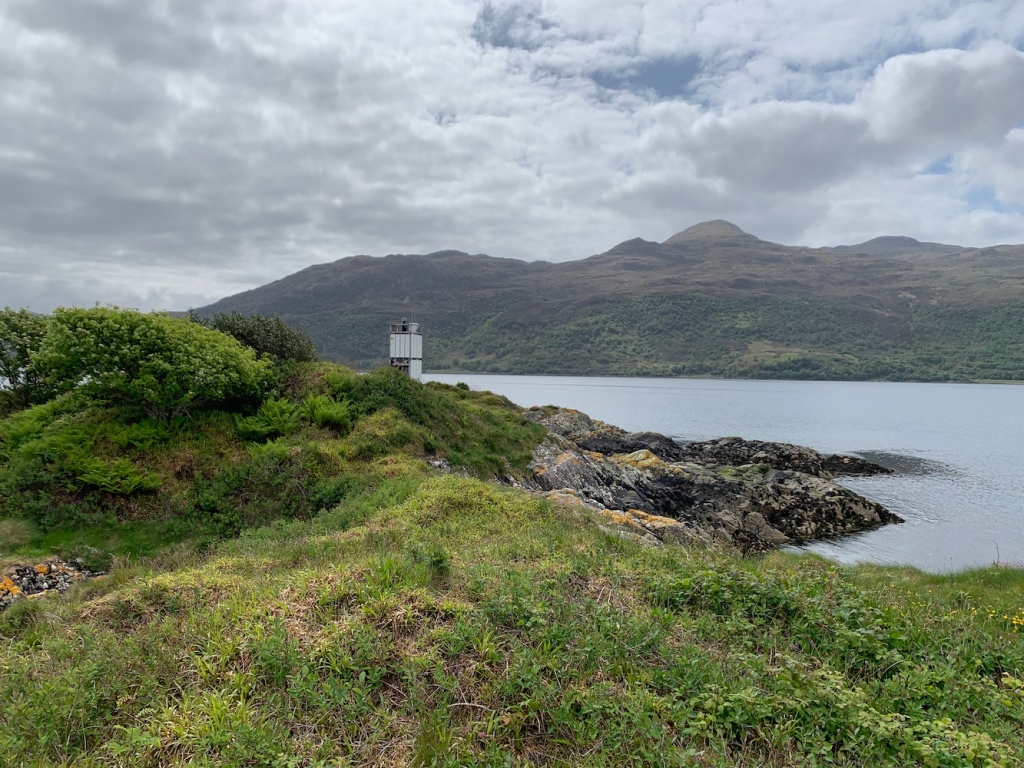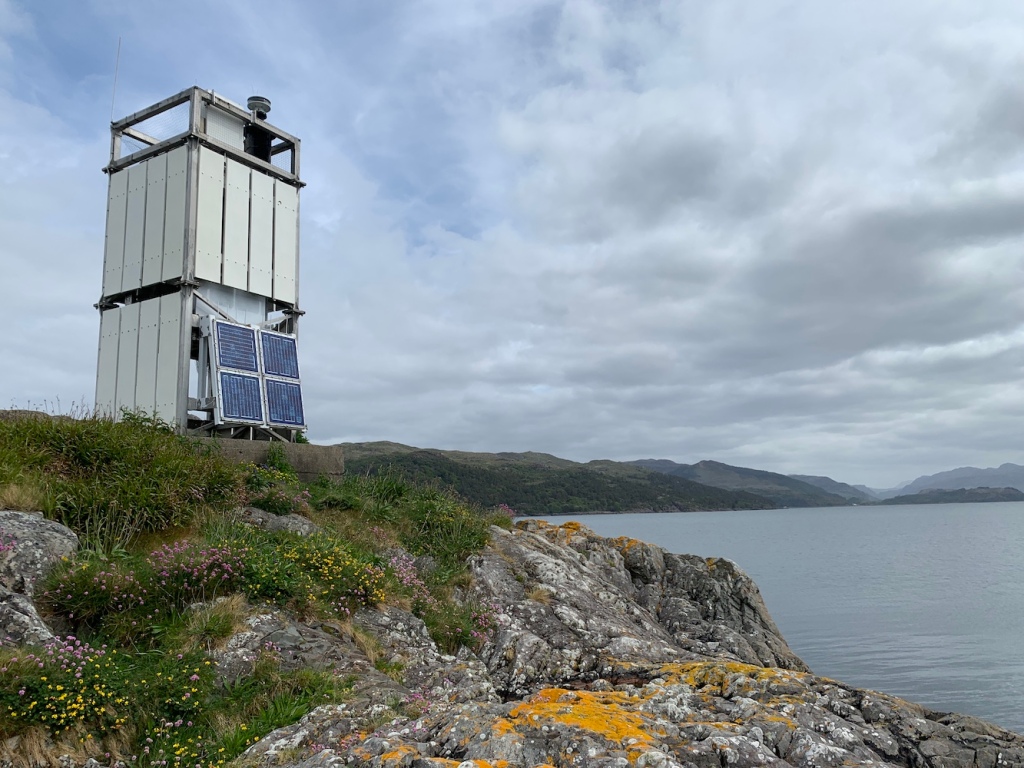The Association of Lighthouse Keepers’ Cornwall event continued on Thursday and it kicked off with a return to the National Maritime Museum in Falmouth.
This time we’d hired a meeting room so the ALK’s South West Regional Rep, Ken Trethewey, who is also the author of ‘The Lighthouses of Cornwall and Devon: A Narrative’ among other books, could share his knowledge and personal experience of lighthouses in Cornwall and some further afield too.
It was a great presentation, starting off with a picture of St Catherine’s Point Lighthouse in Fowey. I was banned from answering the ‘where is this lighthouse?’ question! Ken then went on to talk about Wolf Rock Lighthouse and the amazing opportunity he’d had to fly by helicopter to the lighthouse and take a look inside.
Ken is one of the original lighthouse baggers and so was part of the very lucky – and much smaller – group who would have actually visited the lights while there were still keepers working in them.
Ken also speaks very fondly of Eddystone Lighthouse and the lesser known Plymouth Breakwater Lighthouse, which he was able to organise an ALK trip to see a couple of months ago. Hopefully we can do a re-run of that next year and I’ll make sure I can join next time too. I call it a perk of the job!
The second part of Ken’s talk was fascinating when he delved into his family history and the discovery that three of his ancestors were lighthouse keepers with a particularly close connection to South Foreland Lighthouse. Working alongside his brother, he has released a new book, ‘Light on the Forelands’ which details their findings.
After an enlightening morning it was time for me to get some fresh air so I headed to Helston on the bus for a walk around The Loe, Cornwall’s largest natural freshwater lake. The Loe is only separated from the sea by a sand bar which forms part of the circular walk. No lighthouses there, but still some great views nonetheless.
Arriving back in Helstan just in time, it was then a matter of journeying south to the Lizard Lighthouse. Unfortunately the Lizard Lighthouse Visitor Centre is currently closed with no signs of it reopening. This obviously caused us a problem for getting in, but once again Nick from Trinity House offered to help out and we got permission for access to the lighthouse only, not the Visitor Centre.
There’s something about lighthouses that are frequently visited and very popular. I’m sure I’ve mentioned in at least one blog post before that my affections generally always lie with those that are often overlooked, usually because you can’t just drive to them and it takes more than a short walk. Lizard is, dare I say it, one of those that I just find too popular, but it was actually nice to get inside the tower knowing that it would only be our group in there and it wouldn’t be a matter of battling past numerous others.
It certainly is a nice-looking lighthouse though and the addition of the second tower as well adds more visual interest. Perhaps as evidence of its popularity, Nick showed us a cupboard on the ground floor where they store a range of sizes of plimsolls as they had people turning up wearing completely inappropriate footwear.
The lens in Lizard Lighthouse is fantastic and rotates incredibly fast. It gives off an incredibly powerful light, which can be seen for an impressive 26 nautical miles, which will presumably be largely to do with it being on the most southerly point of the UK and aiding navigation of both the English Channel and vessels arriving from the wider Atlantic to the west.
Ken actually stepped in again at one point to describe in more detail an old light mechanism that is contained in one of the cupboards at the lighthouse. This was the old Carbon Arc Lamp used in the lighthouse from 1903 to 1936. Lizard was one of the first lighthouses to have electricity and this method of powering the lighthouse involved applying a high voltage of electricity to the two carbon rods, which created a permanent spark between them. I’d never seen one of these before.
Of course Joe the Drone was up to his usual tricks.
One extra little gem that we discovered while coming back down the ladder from the lamp room was a tiny hatch. When you lifted the little door you were greeted with a sign saying ‘Don’t be nosey’.
Sometimes these little touches can help make a visit more memorable – and enjoyable too 🙂

